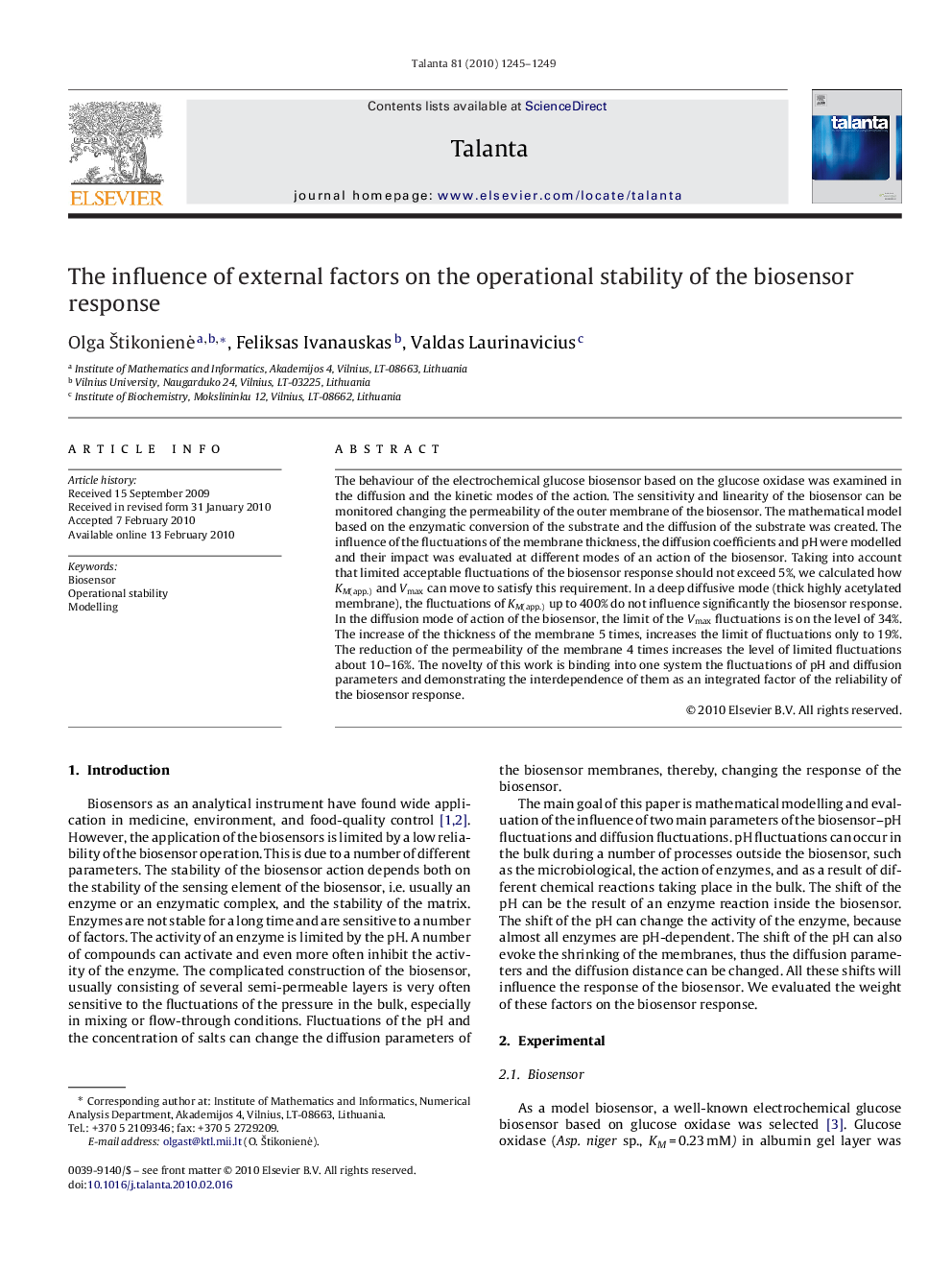| Article ID | Journal | Published Year | Pages | File Type |
|---|---|---|---|---|
| 1242622 | Talanta | 2010 | 5 Pages |
The behaviour of the electrochemical glucose biosensor based on the glucose oxidase was examined in the diffusion and the kinetic modes of the action. The sensitivity and linearity of the biosensor can be monitored changing the permeability of the outer membrane of the biosensor. The mathematical model based on the enzymatic conversion of the substrate and the diffusion of the substrate was created. The influence of the fluctuations of the membrane thickness, the diffusion coefficients and pH were modelled and their impact was evaluated at different modes of an action of the biosensor. Taking into account that limited acceptable fluctuations of the biosensor response should not exceed 5%, we calculated how KM(app.) and Vmax can move to satisfy this requirement. In a deep diffusive mode (thick highly acetylated membrane), the fluctuations of KM(app.) up to 400% do not influence significantly the biosensor response. In the diffusion mode of action of the biosensor, the limit of the Vmax fluctuations is on the level of 34%. The increase of the thickness of the membrane 5 times, increases the limit of fluctuations only to 19%. The reduction of the permeability of the membrane 4 times increases the level of limited fluctuations about 10–16%. The novelty of this work is binding into one system the fluctuations of pH and diffusion parameters and demonstrating the interdependence of them as an integrated factor of the reliability of the biosensor response.
